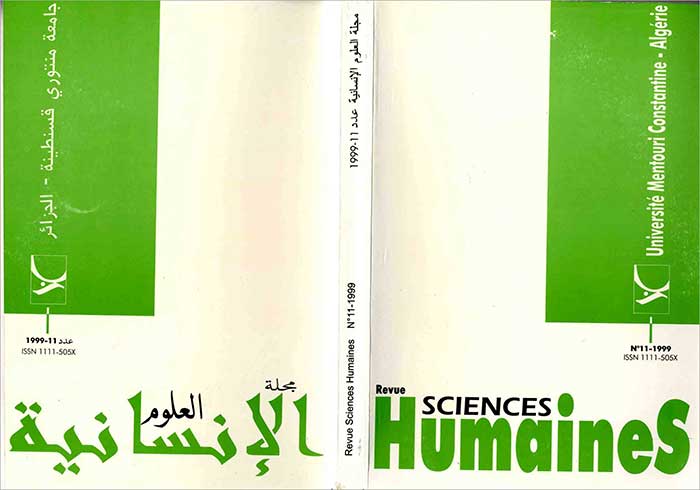Case grammar and its implications to developing writing skills
Abstract
This article exposes the existing controversy among researchers about the role of traditional grammar in helping students to overcome their grammatical errors. It consequently shows the relevance of Fillmore’s Case Grammar to developing writing skills and improving linguistic proficiency. The strength of this semantic grammar lies in its "universalism and "generativism". It enables its users to generate an infinitude of sentences and to avoid the burden of negative transfer. It also offers new strategies to understand, analyse and criticise the novel and the short story in an objectively-satisfying manner.
Downloads
References
- Allen, J.P.B, and Corder, S.P. (1973), Readings for Applied Linguistics, The Edinburgh Course in Applied Linguistics, Oxford University Press.
- Allen, J.P.B, and Corder, S.P. (1974), Techniques in Applied Linguistics, The Edinburgh Course in Applied Linguistics, Oxford University Press.
- Anderson, J.M. (1971) The Grammar of Case: Towards a Localistic Theory, London: Cambridge University Press.
- Anderson, J.M. (1977),‘On case grammar’ Journal of Linguistics, Vol.17. No.2:374-78.
- Chafe, W. (1970), Meaning and the Structure of Language, Chicago: The University of Chicago Press.
- Cook, W.A. (1970b), ‘ Improvements in case grammar’, Language and Linguistics Working Papers, No.2, Washington D.C: Georgetown University School of Language and Linguistics, 16-27.
- Cook, W.A. (1971b),' A case grammar matrix’, Languages and Linguistics: Working Papers, No5, Washington University School of Languages and Linguistics, 50-81.
- Fillmore, C.J. (1966),’ A proposal concerning English prepositions’, Monograph Series on Languages and Linguistics, Georgetown University, No.19:19-33.
- Fillmore, C.J. (1968a), ‘The case for case’ , in E. Bach and R. Harms (Eds) Universals in Linguistic Theory,1-88, New York: Holt Rinehart and Winston, Inc.
- Fillmore, C.J. (1968b),‘Lexical entries for verbs’, Foundations of language, No.4:173-93.
- Fillmore, C.J. (1971), ‘Types of lexical information’ in D. Steinberg and L. Jocabovits (ed.),Semantics, USA: Cambridge University Press, 370-92.
- Fillmore, C.J. (1977),‘The case for case reopened’ ,in P. Cole and J. Sadock (ed.), Syntax and Semantics, New York: Academic Press, Vol.8:59-81.
- Fowler, R. (1977), Linguistics and the Novel, London: Methuen.
- Green, P. And Hecht, K. (1992), ‘Implicit and explicit grammar: an empirical study’, Applied Linguistics, Vol.13/2: 168-184.
- Hawkes, T.(1977), Structuralism and Semiotics, London: Methuen.
- Mackenzie, J.L. (1981), ‘Pedagogically relevant aspects of case grammar’ in A. James and P. Westney (eds.) New Linguistic Impulses in Foreign Language Teaching, Tubingen: Gunter Narr Verlag.
- Nilsen, D. (1972), Towards a Semantic Specification of Deep Case, The Hague: Mouton.
- Nilsen, D. (1973). The Instrumental Case in English, The Hague: Mouton.
- Rutherford, W.(1992), Second Language Grammar: Learning and Teaching, Longman. First ed. (1987).
- Winograd, T. (1983), Language as a Cognitive Process, Vol.1. USA: Addison-Wesley.












